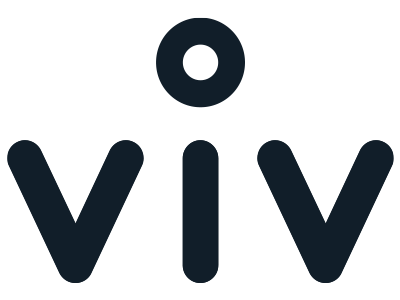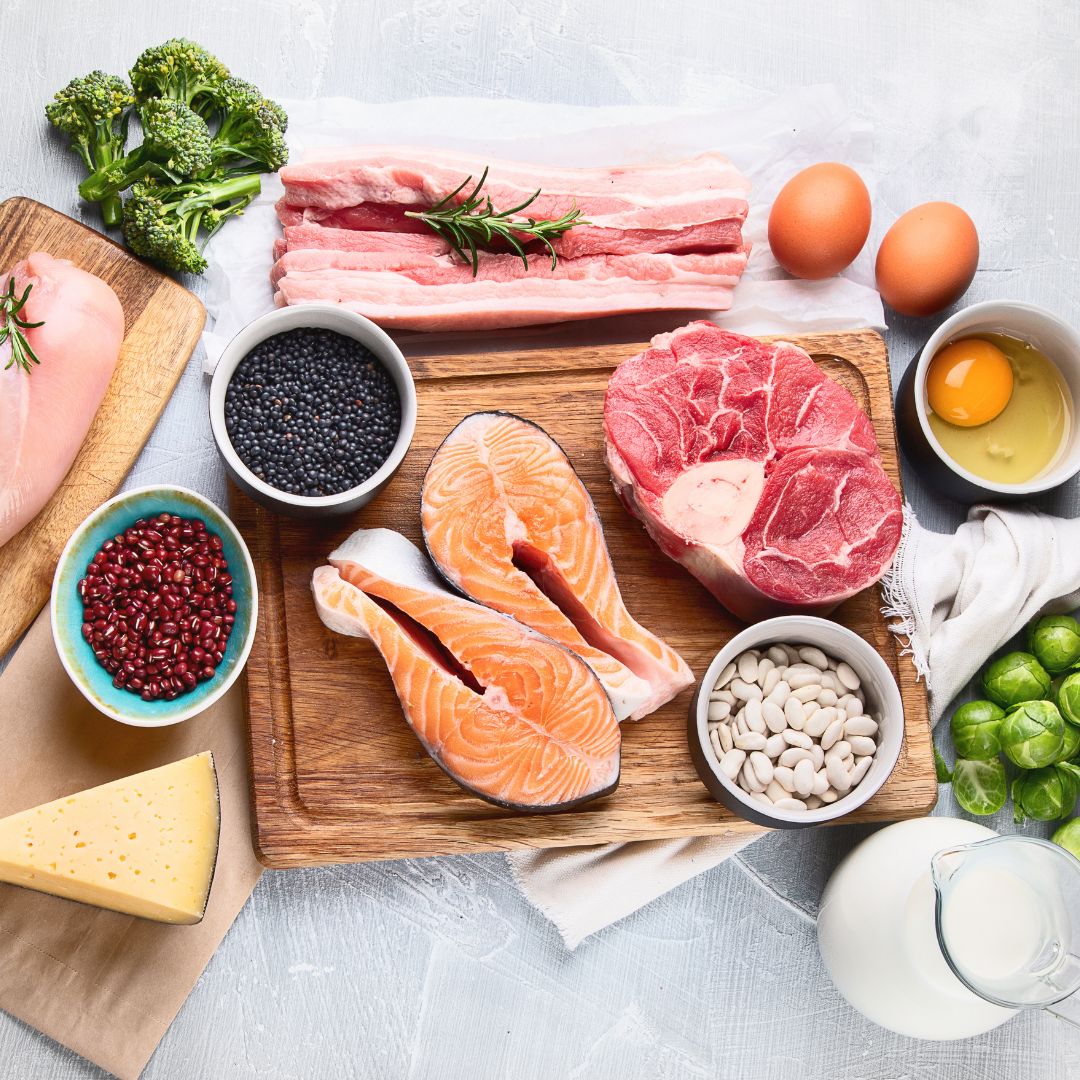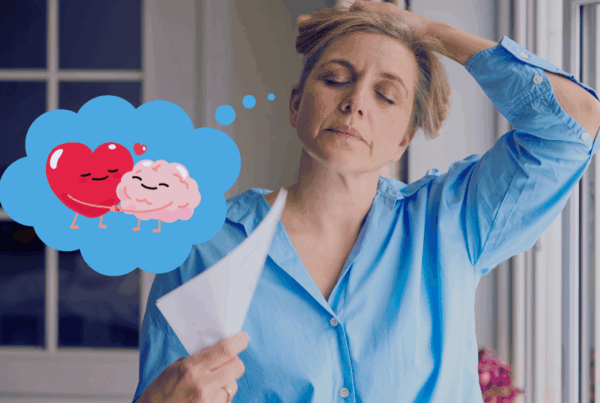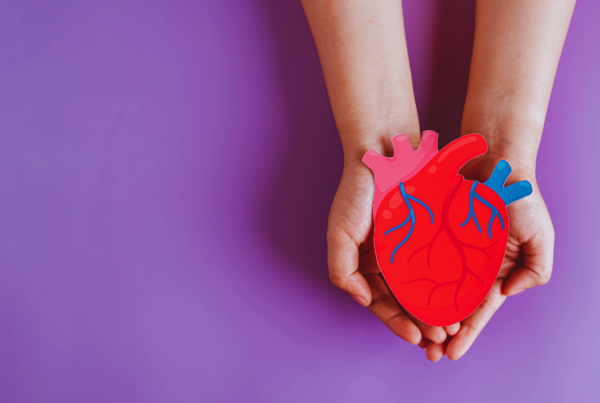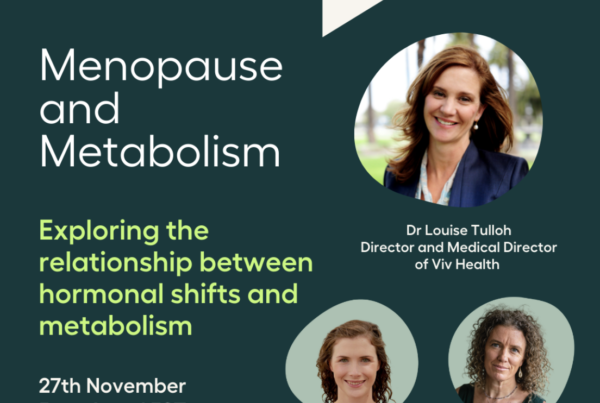Are you getting enough protein?
Protein is found in our hair, skin, nails, teeth, bone, every internal organ and, virtually every cell in our body (not just muscles!).
Proteins are also used as chemical messengers, enzymes, and nutrient carriers in the blood. At least 10,000 different proteins make you what you are and keep you that way so it’s easy to see how important they are for our survival. Our body makes protein from building blocks called amino acids, either from scratch or by changing them into other forms. There are 8 amino acids that can’t be made by the body which must be obtained from food. There are called the essential amino acids.
Where to find protein from food
Complete proteins contain all the amino acids needed to make new protein for the body; these are mostly found in animal foods such as red meat, poultry, eggs, fish, and dairy. Incomplete proteins, usually lack one or more of the essential amino acids. A varied plant-based diet comprised of wholegrains, beans, nuts, seeds, fruit and veg can supply all essential amino acids but aside from quinoa and chia seeds they are not complete proteins.
Although it’s easy to find protein to meet our dietary requirements, it’s the quality of protein we eat and the protein “package” that’s important. Ideally, we should aim to eat foods that contain protein plus other valuable nutrients rather than focus on the protein alone. A 180 g piece of salmon for example, will not only supply you with 35 g of protein but is packaged up with Omega 3 fatty acids, complex B vitamins, and vitamin D. On the other hand, a 70 g serve of grilled bacon with its delicious crispy fat supplies 21 g protein, but comes with 5 grams of saturated fat, more than half the recommended daily limit of salt, and preservatives that may not be all that healthy. A cup of cooked lentils provides around 18 grams of protein with 15 grams of fibre and virtually no fat.
If you were to rank protein-rich foods by their nutrient “package” alone the 5-star proteins would include lean chicken and turkey, free-range eggs, fish and seafood, especially the oily types like salmon, sardines and mackerel, lean game meats such as kangaroo and venison, lean pork, lean red meat, goat, liver, low fat dairy and no-added-sugar yoghurt.
These days the environment weighs heavily on the conscience of many people, and animal proteins, aside from being expensive are also a major contributor of greenhouse gases, particularly beef, lamb, and goat. It’s resulted in a huge movement in veganism and the consumption of plant foods only. Obtaining protein from plant foods can be done but you do have to be wholly conscious of balancing the diet with a wide range of wholefoods including wholegrain cereals, nuts and seeds, beans, pulses, and vegetables. A diverse vegan diet can be extremely healthy when you take the time to prepare the foods from scratch, but we should all be mindful that the vast amount of processed vegan products on the market can be as bad as many of the ultra-processed food products that have lined our supermarket shelves for years. Always read the label and watch out for excess salt, added flavours and unfamiliar sounding ingredients.
It’s important to eat protein but choose the quality of protein you eat wisely. The best advice is to eat whole foods and limit your intake of protein-rich processed foods such as cured meats, sweetened yoghurt, and processed plant-based protein foods.
How much protein do we need for our own good health and, for the health of the planet, where should this protein come from?
Let’s start with how much we need.
New research suggests, women in midlife should increase their intake of protein from around 0.8 g protein per kg body weight to at least 1.2 g per kg body weight (more if you exercise a lot). Daily, that’s an overall increase in protein from 16 percent to 20 percent of your total energy intake. At the same time, researchers recommend reducing your total calorie intake from fat and carbohydrate by around 250 calories to avoid weight gain. The increase in protein can help compensate for a loss in muscle tissue and bone mass which occurs in perimenopause and menopause.
Replacing fat and carbohydrate-rich foods with quality protein is a good way to reduce your calorie intake and induce satiety (how “full” you feel). Some experts call it a dietary “hack” with protein helping to stave off hunger pangs and the tendency to overeat. The scientific explanation is called the “protein leverage effect”, a mechanism which occurs when the body loses lean muscle protein, and the brain registers the need to compensate that protein lost from the body by protein from food. If the protein loss is not met by eating protein-rich foods we tend to keep eating until we get the necessary amount, overconsuming excess calories from fats and carbohydrates along the way.
There are 3 compelling reasons to increase your protein consumption during menopause
- To compensate protein loss from muscle and lean body tissue
- Prevent overconsumption of fat and carbohydrate-rich foods
- Reduce your overall energy (calories) intake.
What does 1.2g/kg protein look like and where does it come from?
Protein rich foods are not gram for gram equal; 200 grams of eye fillet does not provide 200 grams of protein.
Let’s imagine a lady called Jane is 66 kg and going through menopause. She needs around 79 g of protein a day. Ongoing, if Jane failed to meet that daily protein requirement, she would be at greater risk of accelerated bone loss and muscle atrophy and weight gain. But Jane is smarter than that .
| Meal | Food | Protein (g) |
| Breakfast | 1/2 cup natural muesli with strawberries and ½ cup natural unsweetened yoghurt | 7 |
| Mid-Morning | Skimmed Latte made with 250 ml milk | 8 |
| Lunch | 60 g chicken in a sandwich made from rye bread with avocado, rocket, tomato, grated carrot | 26 |
| Snack | 1/4 cup almonds | 7.5 |
| Dinner | 160 g Grilled salmon with sweet potato, broccolini garlic and olive oil | 45 |
| Snack | 30 g dark chocolate | 1 |
| TOTAL | 94 |
As you can see from the table above, Jane easily achieved the RDI of protein for the day. She also reduced her energy intake down to 7300 kJ (1770 calories) which falls within the suggested 250 calories energy reduction.
The little stuff counts. While it may be tempting to just stuff some of last night’s roast chicken into some bread and run. Don’t do it: The body is far less forgiving as we get older and now more than ever, we can’t afford to eat mindlessly. Wholegrain bread is better than white, the extra salad and veggies nudge the protein intake up marginally, and boost fibre and nutrients to improve gut health.
Be like Jane! Consider how much protein you currently get from your diet and ask yourself, is it enough?
